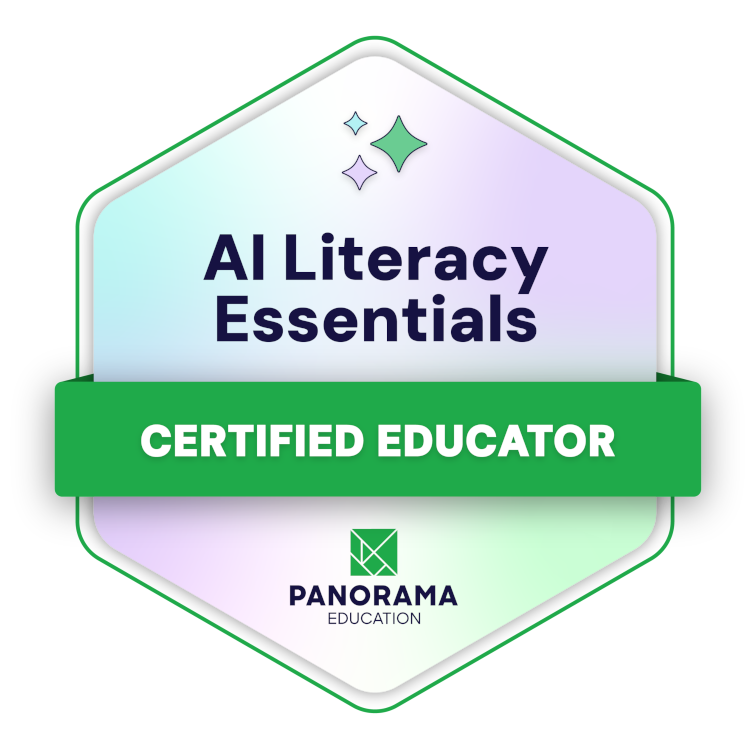When teachers and families communicate openly, students thrive. Strong partnerships between home and school are linked to higher academic achievement, better attendance, and improved graduation rates—including a 6% reduction in chronic absenteeism.
At the same time, educators and families alike face real challenges when it comes to staying connected—whether it’s juggling busy schedules, navigating tough conversations, or aligning on expectations. In fact, many teachers report barriers to consistent communication, from missed messages to uncertainty about how best to engage caregivers.
This Teacher and Parent Communication Guide offers practical strategies to strengthen the home-school connection. Whether you're a teacher looking to build trust with families or a caregiver hoping to support your child’s learning more effectively, this guide is here to help foster collaboration, clarity, and shared success.
Why Strong Teacher-Family Communication Matters
Strong communication between teachers and families is key to student success. When educators and caregivers stay connected, students receive clear, consistent support—both in the classroom and at home. Here’s how open communication makes a difference:
- Students receive consistent messages: When teachers and families use shared language and align on expectations, students develop a clearer understanding of what success looks like.
- Families feel like valued partners: Regular updates build trust and open the door for caregivers to share insights, ask questions, and feel empowered in their child’s learning.
- Concerns are addressed early: Open lines of communication make it easier to catch small issues before they become bigger problems.
- Caregivers can reinforce learning at home: When families know what’s happening in class, they can naturally support key concepts during everyday routines.
- Engaged families boost student outcomes: When families feel connected to school, they’re more likely to attend events, monitor academic progress, and stay in touch with teachers.
Creating a Welcoming Environment for Every Family
Building open lines of communication starts with creating a welcoming environment where all families feel valued, respected, and included. These best practices can help establish a strong foundation from the very beginning of the school year:
- Kick off with a clear communication plan: Start the year with a friendly welcome message that outlines how and when families will hear from you—whether it’s through weekly emails, monthly newsletters, or scheduled check-ins. Be specific: “I’ll send a quick update every Friday,” or “You’ll receive a monthly newsletter with tips to support learning at home.”
- Learn about families’ communication preferences: Use a short survey to find out how caregivers prefer to connect, what languages they speak at home, and the best times to reach them. Offer flexible options like evening phone calls or digital messages to accommodate diverse needs.
- Use inclusive and easy-to-understand language: Choose terms like “families” or “caregivers” to reflect all household types, and avoid jargon to keep messages clear for everyone—regardless of background or familiarity with school systems.
- Be present outside the classroom: Build relationships during arrival and dismissal times or at school events. Informal interactions—like a quick hello at pickup—can go a long way in building trust and rapport.
- Set clear expectations for availability: Let families know how and when they can reach you. A simple message like “I check email between 3:00 and 4:30 p.m. and reply within one school day” helps set healthy boundaries while showing you’re accessible.
What Gets in the Way of Communication
Effective communication begins with understanding the real-world challenges that can make it difficult for families and teachers to stay connected. When school and district leaders account for these barriers, they can design strategies that are more supportive for everyone involved:
- Limited time on both sides: Educators and families alike are balancing full schedules. Between teaching, work, school activities, and home responsibilities, finding time to connect can be challenging.
- Language and translation needs: For families who speak languages other than English, communication may require translation support or bilingual staff to ensure information is shared clearly and respectfully.
- Inconsistent access to technology: Not all families have reliable internet access or digital devices. It’s important to provide alternatives—such as paper flyers, text messages, or phone calls—to make communication more equitable.
- Unclear or inconsistent expectations: Families may be unsure how or when to reach out—especially if different classrooms use different communication platforms or tools. A consistent school-wide approach helps reduce confusion.
- Past negative experiences: Some families may be hesitant to engage due to feeling dismissed, unheard, or judged in the past. Rebuilding trust takes time, empathy, and consistent follow-through.
What Effective Communication Looks Like
Effective communication helps families feel informed, empowered, and engaged in their child’s learning journey. When families know what’s happening, what to expect, and how to stay involved, students benefit from a more connected support system. Try these strategies to strengthen relationships with families:
- Use clear, accessible language: Speak and write in plain terms, avoiding jargon and excessive acronyms. Make sure your message is easy to understand for all caregivers, regardless of their familiarity with school systems.
- Translate when needed: Language shouldn’t be a barrier. Use professional translators, bilingual staff, or reliable translation tools to ensure families receive messages in their preferred language.
- Share the positives—not just problems: Regularly highlight students’ strengths, milestones, and accomplishments. Families should hear what’s going well, not only when there’s a concern.
- Be specific and actionable: Instead of general comments, offer clear examples of what a student is doing well and where they might need more support. This helps families understand how to help at home.
- Invite two-way conversation: Close messages with open-ended questions that encourage dialogue, such as, “Have you noticed anything at home that’s helped Sam stay focused on reading?”
- Honor family expertise: Ask about home routines, student interests, and learning styles. Families bring valuable insights that can strengthen your approach and deepen trust.
Tools and Routines That Make Communication Easier
When communication is streamlined and predictable, it’s easier for both teachers and families to stay connected. By using the right tools and setting clear routines, educators can reduce stress while ensuring every family feels informed and included. Here are a few strategies to make outreach more manageable and effective:
- Establish a weekly check-in routine: Set aside a consistent time each week to share updates about classroom activities, learning milestones, or upcoming events. Even a short message can go a long way in keeping families in the loop.
- Limit platforms to one or two: Choose a primary method for communication—like a messaging app or email—and have a backup in case there are technical issues. When families know exactly where to look for information, they’re more likely to stay engaged and respond.
- Leverage existing tools: Many student information systems (SIS) and learning management systems (LMS) include built-in communication features such as messaging, calendars, and grade updates. Make the most of what’s already available.
- Track your outreach efforts: Use tools like Panorama Student Success to log communication and ensure no family falls through the cracks. This helps identify patterns, provide support, and adjust strategies as needed.
How AI Can Support Teacher-Family Communication
Today’s technology is making it easier than ever for educators to build and maintain strong, consistent connections with families. Artificial intelligence tools are streamlining communication workflows while keeping the focus on meaningful, human-centered relationships. Here’s how AI is supporting teacher outreach:
- Draft messages: AI-powered tools like Panorama Solara help educators quickly draft family updates by pulling relevant insights from student data. This makes it easier to create individualized messages—without starting from scratch every time.
- Prompt timely follow-ups: AI-driven early warning systems can detect patterns like missed check-ins or drops in attendance, prompting teachers to follow up with families before issues escalate.
- Summarize trends clearly: Rather than sending families pages of data, AI tools can generate concise summaries of student or class performance. These summaries help teachers highlight key takeaways during conferences or progress check-ins.
- Save time—while staying personal: The best AI tools support teachers by suggesting content and surfacing insights, but always leave the final word to the educator. Teachers retain full control over the tone, message, and delivery, ensuring communication remains authentic and relationship-centered.
Tips for Building Trust During Conversations
Every interaction with families is a chance to build trust and reinforce your shared commitment to student success. Here’s a simple framework to guide effective, empathetic conversations:
- Begin with a strength: Start by naming something the student is doing well. Leading with a positive sets the tone and reminds families that you see the whole child—not just the challenges.
- Use “I noticed…” statements: Share observations using specific, nonjudgmental language. For example, “I noticed Maya seemed frustrated during group work this week,” rather than generalizing or assigning blame.
- Focus on collaboration, not correction: Explain what supports are already in place at school, and ask what families are noticing at home. Acknowledge their insights and invite them into the problem-solving process.
- Close with a clear, shared plan: Outline next steps for both school and home. Be specific about what each side can do—and when you’ll check in again—to ensure continued progress and support.
Strengthen Family Partnerships with Feedback That Matters
Sustained family involvement plays a critical role in student success at every grade level. One of the most powerful ways to build stronger connections is by actively listening to families—and responding to what they share.
Consider launching bi-annual, district-wide surveys to elevate family voices and gather meaningful feedback. When framed as an opportunity for caregivers to help shape a more welcoming, supportive school environment, surveys can deepen trust and drive real change.
Need help getting started? Download Panorama’s Family-School Relationships Survey—a research-backed tool featuring over 100 questions designed to surface insights about communication, engagement, school climate, and more. Use it to better understand how your school can strengthen relationships and support every student through lasting family partnerships.







-1.png?width=666&height=640&name=Panorama%20Family%20Survey%20User%20Guide%202022%20(dragged)-1.png)